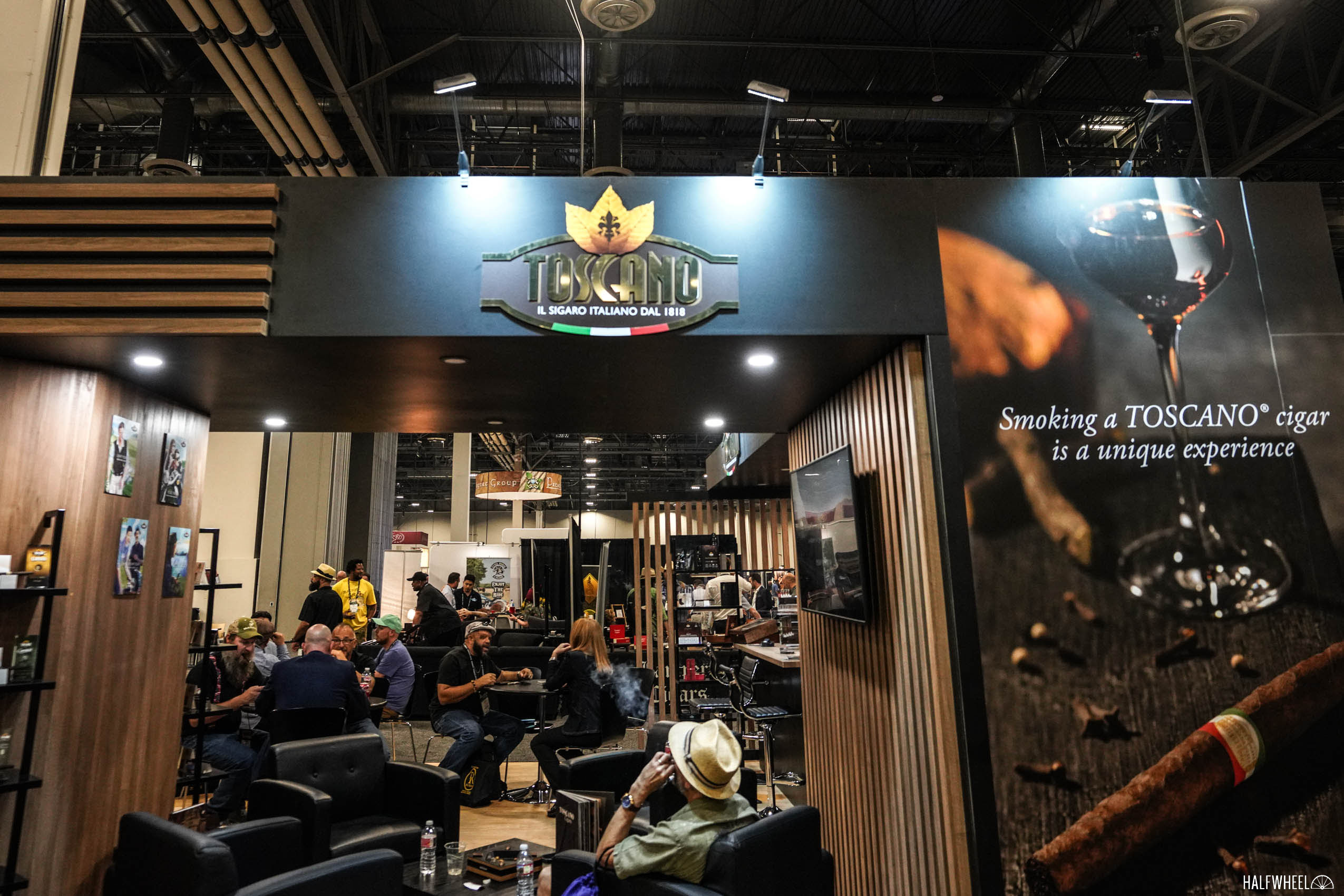Aging is a commonly used and discussed term in the premium cigar industry, whether it be in the aging of tobacco leaves to finished cigars before they leave a factory to aging done by distributors, retailers and consumer before the cigars are eventually smoked.
For its newest release that came out in the summer of 2022, Toscano made aging the focal point, and not just that the cigar were aged, but done so under the watchful eye of an affinatore, or highly experienced cigar blender. They were also aged in specially designed rooms with precise control over the temperature and humidity. It is a process that takes a minimum of 360 days and is overseen by an affinatore, meaning a “refiner” who is a highly experienced cigar blender, for humidity and temperature standards inside of specially designed rooms.
For the line’s debut, the company released three blends, all of which come in a 6 1/3 x 40 vitola, and which have an MSRP of $8 per cigar and $240 for a 30-count box.
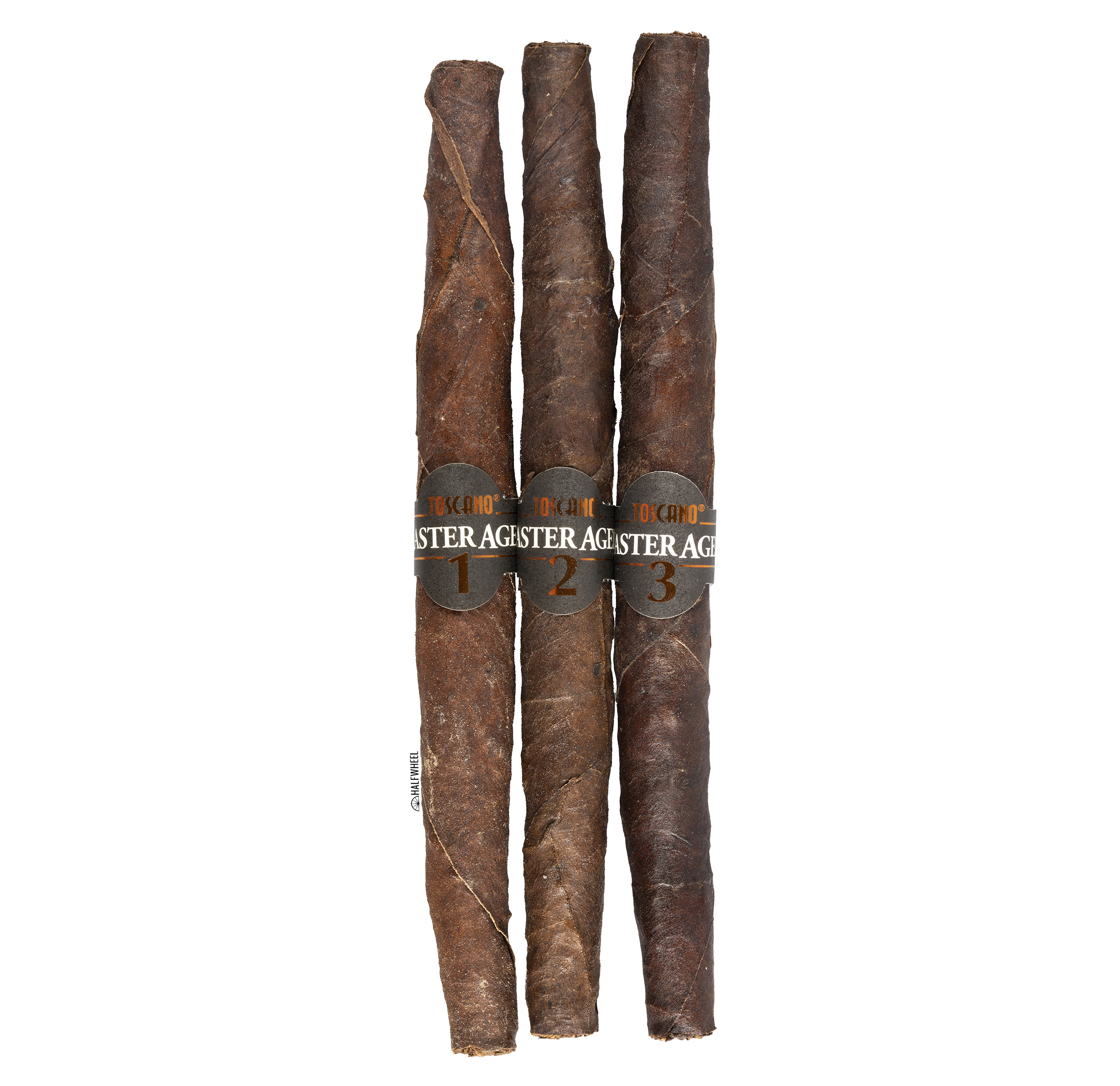
- The Toscano Master Aged Series 1 uses Kentucky tobacco grown in Tuscany, Tennessee and Kentucky, which the company says provides a full bodied and rustic taste, though notes that it is softened by the maturation process.
- The Toscano Master Aged Series 2 features a Kentucky tobacco wrapper grown in Tennessee and which undergoes a fire curing process that lasts 30 days, giving it a toasty taste, according to the company. The filler tobaccos are Kentucky tobaccos grown in Italy and the U.S., and the company says the full blend adds scented wood and dried fruit.
- The Toscano Master Aged Series 3 uses Kentucky tobaccos that are all grown in the U.S., stalk cut and then fire cured for a longer process, which the company says gives it a high intensity flavor profile marked by toasted and aromatic scents.
Also of note about the Toscano Master Aged Series, while most of Toscano’s cigars do not require storage in a humidified environment, these do in order to preserve their flavor and freshness.
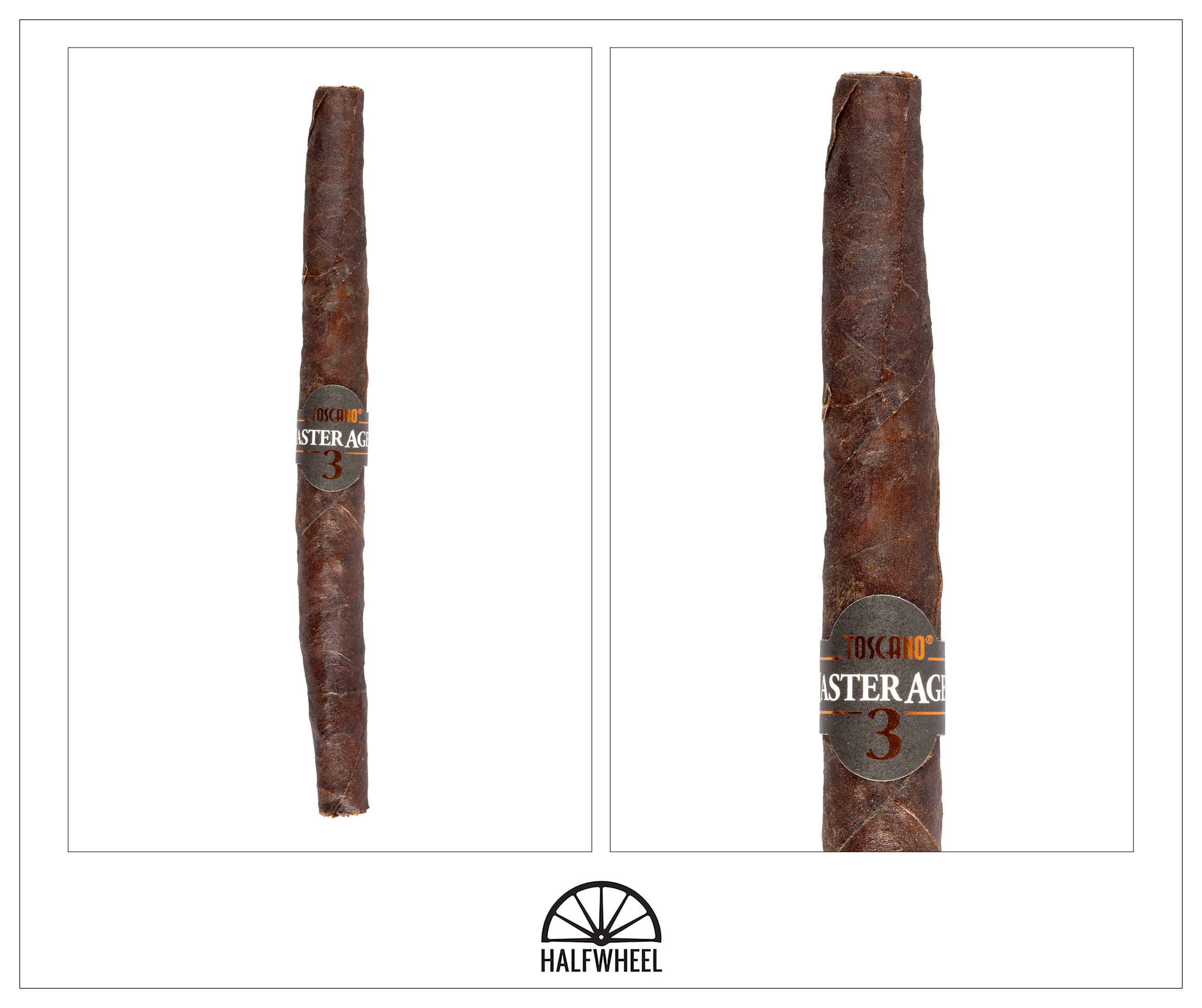
- Cigar Reviewed: Toscano Master Aged Series 3
- Country of Origin: Italy
- Factory: Manifatture Sigaro Toscano S.p.A.
- Wrapper: U.S.A. (Kentucky Fire Cured)
- Binder: n/a
- Filler: U.S.A. (Kentucky Fire Cured)
- Length: 6 1/3 Inches
- Ring Gauge: 40
- Vitola: Lonsdale
- MSRP: $8 (Box of 30, $240)
- Release Date: June 2022
- Number of Cigars Released: Regular Production
- Number of Cigars Smoked For Review: 3
I can usually glean some sort of impression about a cigar before I take it out of the cellophane, but that’s not quite the case here. Between the very dark color of the wrapper, logos on the cellophane and a slightly crinkled texture which plays with the light, all I can tell is that it’s a dark cigar that isn’t a typical parejo shape. Once the cellophane is removed, I get a better look at the wrapper, which has lots of visual texture as an impressive meaty brown color that looks like a steak that has just come off the grill. The seams aren’t flat, the cigars have a slight curve, and the wrappers have a decent number of veins, which also contributes to a distinct tactile experience. Top all that off with the fact that there is no cap on the cigars, and it is certainly a distinct experience for someone who doesn’t smoke a lot of Toscano’s offerings. Each of the three cigars is fairly firm, with one quite firm and the other two showing a bit of give. I can’t say that the cigar has much of a distinctive aroma from the wrapper or the foot, other than to say it has the sort of tobacco smell I recall from walking though factories, particularly the later stages of the process after the leaves have undergone fermentation and aging. If I really sniff hard, the wrapper has a bit of the smokiness you’d expect from an active charcoal grill, while one cigar has a bit of a mushroom-based steak sauce. The cold draw is fairly easy and smooth, with one cigar’s airflow ideal, one a bit loose and the other a bit firm. After a few draws, a bit of smokiness begins to come out, with a flavor of damp tobacco after that and hints of damp firewood. There’s a touch of some sort of tangy sauce as well, making me think of Heinz 57 sauce as the closest approximation that comes to mind.
Seemingly every time I light up a Toscano, I am expecting the flavor and strength to almost jump off the cigar, hit me square in the mouth and then follow up with a gut shot of nicotine. Yet that doesn’t happen here. Somewhat surprisingly I find the smoke on the mellow and creamy side. There is a bit of nuttiness, some generic tobacco, and some occasional funkiness around the edges that reminds me of young tobacco. Right away, the cigar puts out an impressive amount of smoke for its relatively slender ring gauge, and while airflow on the cold draws varied, each cigar ends up delivering a consistently good draw. By the one-inch mark, the cigar begins to open up with flavor, livening up the more subtle flavors from just a bit earlier. It also shows me that the ash is going to be as interesting looking as the cigar itself, flowering and flaking as soon as there is enough to do so. That funkiness turns into a bit of chalkiness, which I’m hoping departs as a mix of black and white pepper begins carving out some space for itself. The flavor stays surprisingly light on the palate, while retrohales lead with white pepper and finish cleanly, and the two ways of experiencing a puff are in good alignment as this portion finishes. Flavor is medium-minus, body is just about medium, and strength is mild. Construction is very good, though the ash will seemingly be an annoyance.
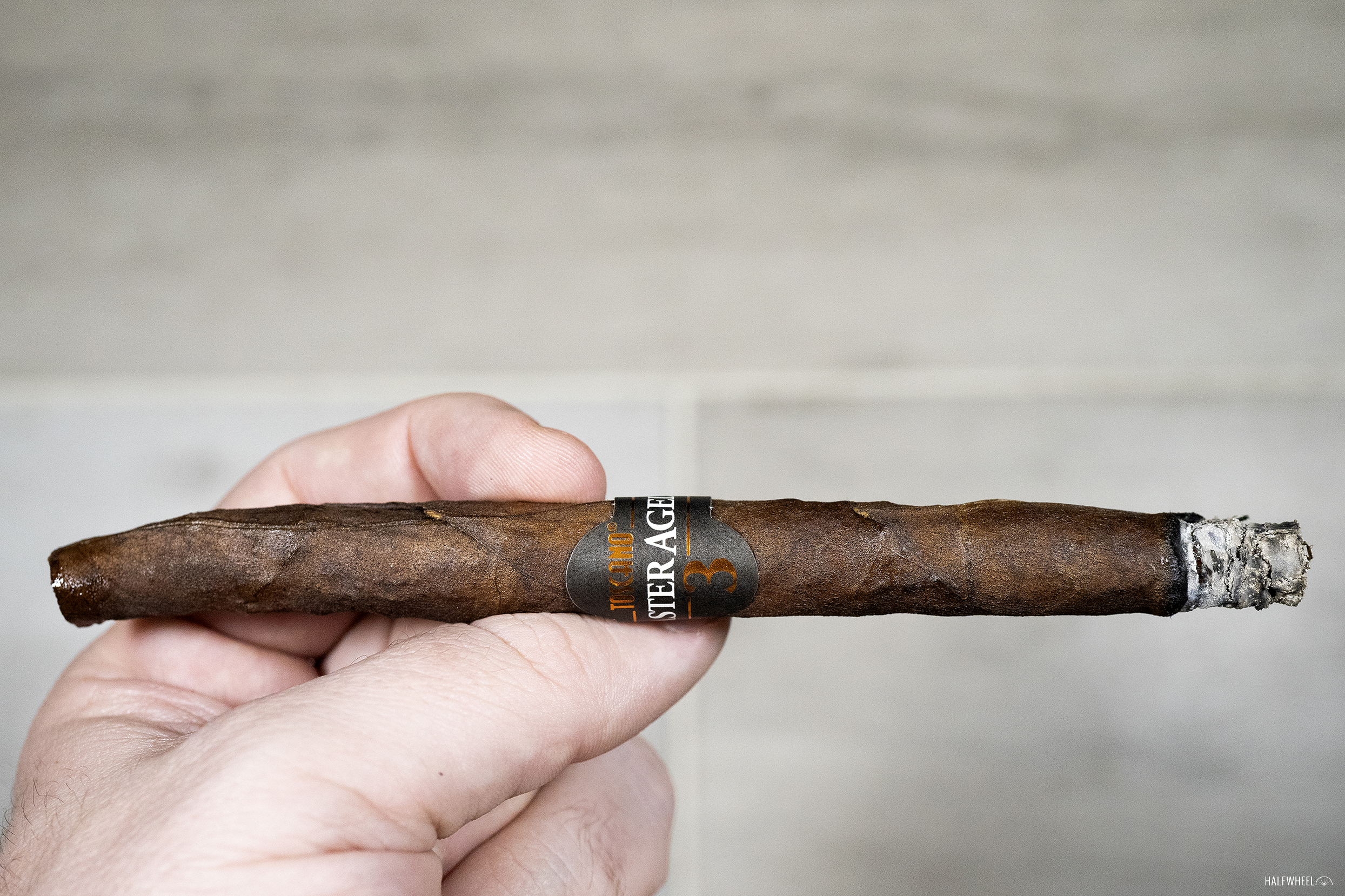
The second third brings about a bit more black pepper, particularly on retrohales, while the overall profile gets a bit drier and reminds me of baled tobacco. While there hasn’t been much change in the flavors that I’m picking up from the Toscano Master Series 3, there has been a steady building of the flavor intensity. At this point in the cigar, that means a surprising amount of creaminess, a light macadamia nut flavor, an underlying dry tobacco flavor and varying mixes of white and black pepper. It’s right around of the midpoint where the Toscano Master Series 3 hits a spot that I would consider in line with what I was expecting from the cigar. The smoke picks up some more body and becomes thicker and heartier, while the flavor picks up some richness and character, layering smokehouse woods, earth and black pepper. The change also imparts a new finish to each puff, as it’s not quite a tingle on my tongue, but what I would equate to my tongue being brushed, a sensation I can’t recall experiencing from a cigar. Retrohales continue to be an excellent aspect of the cigar, now offering a hearty campfire sensation that is rich with wood, pepper and just the right amount of smokiness. The second third finishes medium-plus in flavor intensity and body, while strength is catching up but still sits shy of medium. Construction is quite good with plenty of smoke and no burn problems, while combustion stumbles a bit in this section and requires the occasional relight.
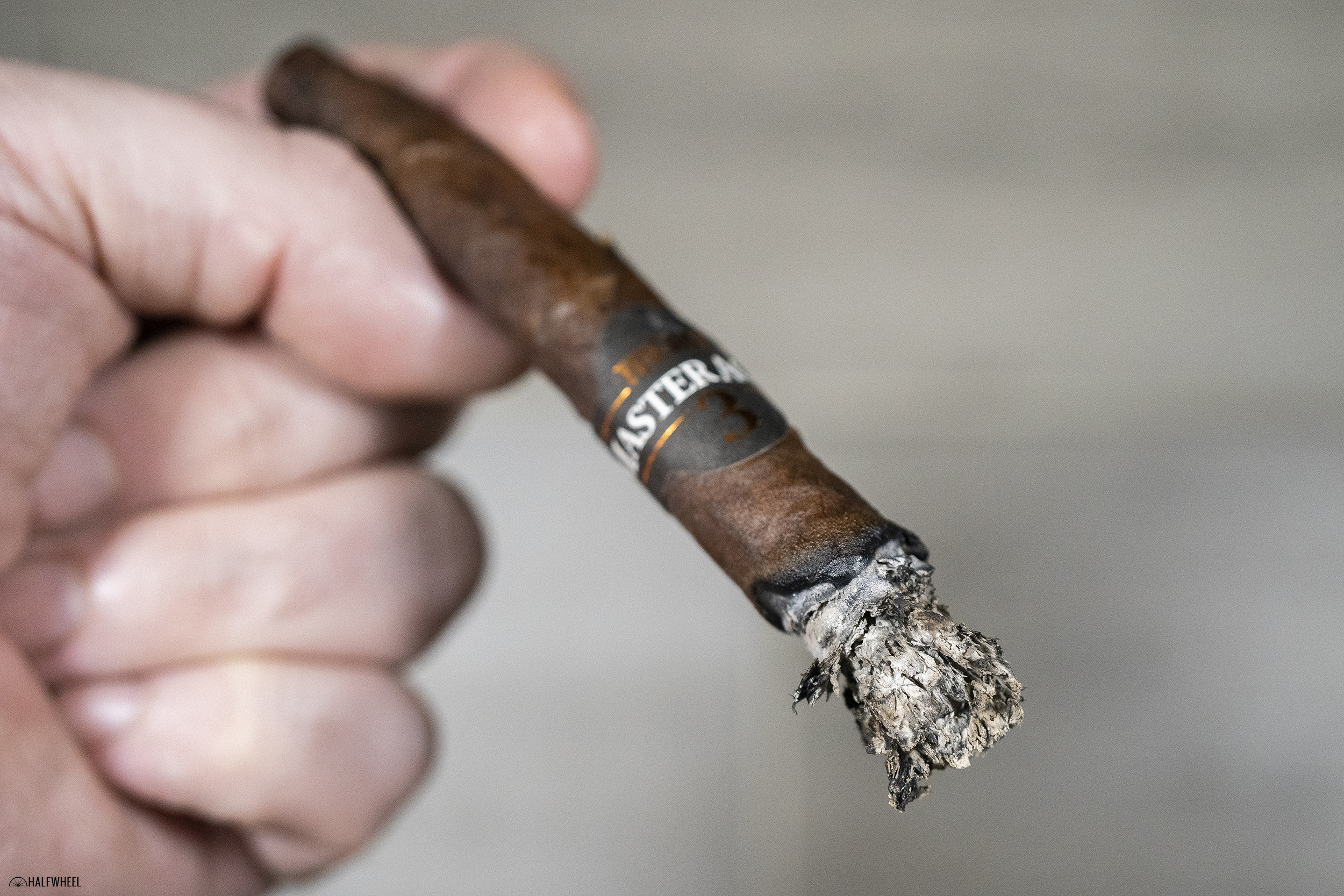
After building up in seemingly every category in its second third, the final third of the Toscano Master Aged Series 3 sees that process put into reverse, slowly undoing the complexity and separating the flavors out into individual components. While the cigar hasn’t had a lot of woodiness to it to this point, a distinct dry wood flavor is the first to split off. Pepper stays fairly distinctive and closer to the core flavor, which has a bit of dry earthiness to it, a signal that the cigar is losing the richness it had in the second third. One of the three cigars holds onto the complexity a bit better than the others, but the general path of the profile stays the same. One aspect that I continue to enjoy are the retrohales, which are still quite punchy thanks to black pepper. The cigar finishes up on a dry note and with a much thinner body of smoke than it had earlier, and some increasing combustion issues leading to more relights than I would like. Flavor is medium for the most part, body is back to medium, and strength is still just shy of medium. The draw and smoke production remain very good, the burn line is a bit uneven but not problematic, while combustion struggles.

Final Notes:
- As you might know, there are two ways to smoke Toscano cigars: the traditional foot to head method, and then cutting the cigar in half and smoking from the thicker midpoint to the thinner end. For the purpose of consistency and with a bit of an eye towards familiarity, I smoked this as I would a traditional cigar.
- If you don’t smoke Toscano cigars on a fairly regular basis, this cigar will feel different in nearly every way. From the mouthfeel to the tactile sensation of the wrapper leaf, to the draw and the incredibly small ring gauge of the head. The first cigar I smoke for this review was as much about re-acclimating myself to these vitolas.
- This seems to require just a slightly quicker pace of puffing than most cigars, though I’m basing that on a fairly small sample size. Each of the three cigars I smoked needed a relight or two along the way, usually in the second third. I’m wondering if something between the types of tobacco used and how they are bunched and rolled affects the cigar’s combustion when at rest.
- If you get annoyed by small flakes of ash ending up all over the place, the Toscano Master Series 3 is going to be frustrating. The ash simply doesn’t hold together as well as other cigars.
- In addition to the distinctive shape of the cigar, the cellophane is distinctive. It features a black strip that can be pulled to separate it at the midpoint. It also features the Toscano Master Aged logo in a repeating layout, plus it is sealed at the ends. The easiest way to open it is to pull the black tab to separate the cellophane in the middle.
- This is the second Toscano release to be reviewed on halfwheel, Charlie Minato reviewed the Duocento in September 2020.
- Charlie Minato also covered the Toscano booth at the 2022 PCA Convention & Trade Show.
- In addition to being available in the U.S., the Toscano Master Aged Series can be found in Germany, Austria, Spain, Romania and Serbia.
- I have not yet had the opportunity to smoke Series 1 or Series 2 for comparison.
- While I was expecting a lot of strength from the Toscano Master Aged Series 3, it was surprisingly tame, peaking just shy of medium in strength on my scale.
- Toscano advertises on halfwheel.
- The cigars for this review were purchased by halfwheel.
- Final smoking time was two hours and 20 minutes on average, a surprisingly long smoking time based simply on the vitola.
- Site sponsor Famous Smoke Shop carries the Toscano Master Aged Series 3.
Given the relative uniqueness of their origin and the tobaccos used, I seem to have an expectation for truly unique experiences, yet the Toscano Master Aged Series 3 seemed to be more on the pedestrian side. Even dominated by Kentucky fire cured tobaccos, the flavor is fairly familiar. It is also quite good, showing some both vibrance and refinement, and rarely a rough or unenjoyable spot. Construction was very good—flaky ash notwithstanding—and combustion was generally good but not perfect. While I don't think I'll be stocking my humidor with these, I'd have no qualms about smoking another one.


